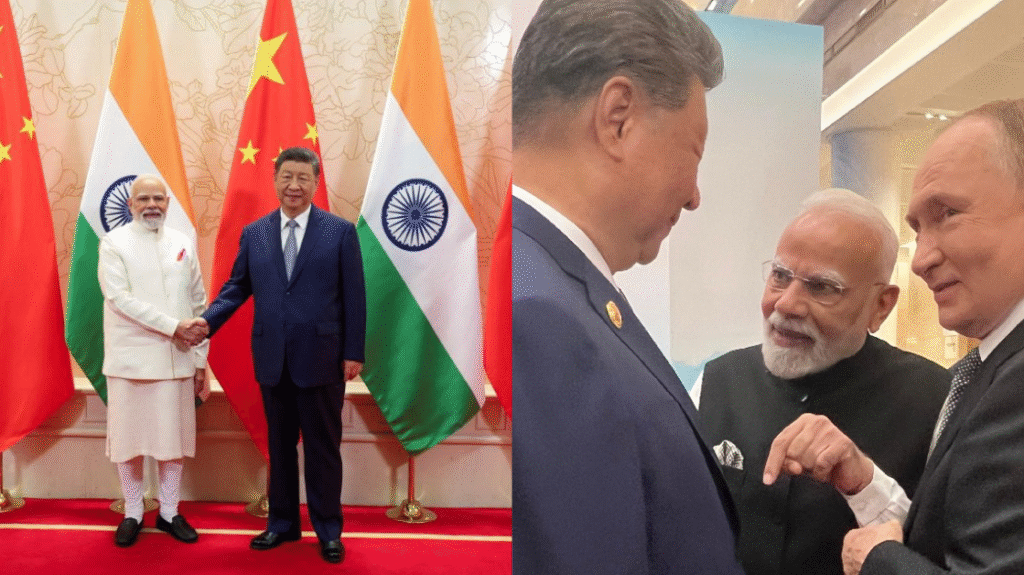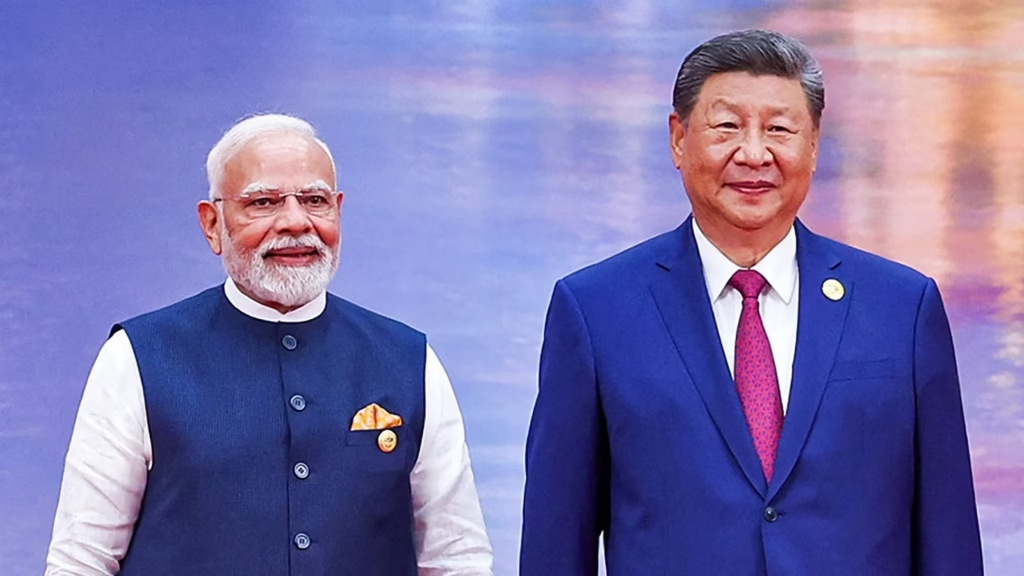Introduction
In a significant diplomatic development, Prime Minister Narendra Modi and Chinese President Xi Jinping reconnected at the Shanghai Cooperation Organisation (SCO) Summit in September 2025. The meeting marks a potential thaw in India-China relations after years of strained ties following the 2020 border clashes in Ladakh. While both nations have remained cautious, their dialogue at the summit signals a willingness to reset ties amid shifting global dynamics, economic challenges, and security concerns.
This renewed engagement has implications not just for bilateral relations, but also for regional stability in South Asia, global trade, and multilateral partnerships.
Background of India-China Tensions

India and China, two of the world’s fastest-growing economies, share a long and complex history. Relations began to deteriorate in 2020 when border clashes in Galwan Valley resulted in casualties on both sides. This incident led to heightened military presence along the Line of Actual Control (LAC), reduced trade cooperation in sensitive sectors, and a growing trust deficit.
Since then, India has adopted a cautious stance, strengthening its ties with the U.S., Japan, and Australia through the Quad alliance, while also restricting Chinese tech companies from operating freely in its digital ecosystem. Meanwhile, China has deepened its ties with Pakistan and pushed forward its Belt and Road Initiative (BRI).
Against this backdrop, the SCO Summit provided a rare platform for Modi and Xi to engage directly.
The Significance of the SCO Summit
The Shanghai Cooperation Organisation (SCO) has become an influential platform in Eurasia, addressing security, economic, and political cooperation among its member states. India joined the SCO as a full member in 2017, while China has been a founding member since 2001.
At the 2025 summit, the Modi–Xi dialogue stood out as one of the most closely watched bilateral interactions. Analysts note that the global geopolitical landscape, marked by U.S.-China tensions, Russia’s role in Eurasia, and global economic uncertainties, created the right environment for India and China to explore de-escalation.
Key Takeaways from Modi–Xi Talks
- Border Dispute Management
Both leaders reportedly discussed ways to maintain peace and stability along the LAC. While no breakthrough agreement was announced, both sides committed to strengthening military-to-military dialogue and continuing disengagement discussions at the commanders’ level. - Trade and Economic Cooperation
Despite tensions, China remains one of India’s largest trading partners. The two leaders agreed on boosting non-sensitive trade sectors such as pharmaceuticals, textiles, and renewable energy, which could benefit both economies. - Regional Security and Terrorism
Modi emphasized India’s concerns about cross-border terrorism, indirectly referencing Pakistan, while Xi called for stronger regional counter-terrorism mechanisms under the SCO framework. - Multilateral Cooperation
Both leaders recognized the importance of cooperation in global issues such as climate change, digital transformation, and energy security.
Why the Timing Matters
The Modi–Xi reconnection comes at a crucial time:
- For India: With elections approaching in 2026, New Delhi wants to showcase its ability to manage hostile neighbors while focusing on economic growth.
- For China: Facing a slowing economy and strained relations with the West, Beijing sees merit in stabilizing ties with India, one of the largest emerging markets.
- For the Region: The Afghanistan situation, tensions in the South China Sea, and Russia’s shifting role in Eurasia make India-China cooperation essential for regional stability.
Expert Opinions
Political analysts believe this thaw could lead to incremental gains rather than dramatic breakthroughs. According to South Asia observers, trust remains low, and both countries are likely to pursue a cautious “engage but hedge” strategy.
Economists, however, are optimistic. If India and China reduce trade barriers, bilateral trade could surpass $150 billion by 2026, creating new opportunities in technology, green energy, and healthcare.
Challenges Ahead
Despite positive signals, several challenges remain:
- Unresolved Border Issues: The LAC disputes remain unsettled, and any new skirmish could derail progress.
- Geopolitical Alignments: India’s growing ties with the U.S. and China’s deepening relationship with Pakistan continue to fuel mistrust.
- Trade Imbalances: India imports heavily from China, creating a large trade deficit that New Delhi wants to address.
- Domestic Pressures: Both Modi and Xi face domestic political expectations that may limit compromises.
What This Means for the Future
If sustained, the Modi–Xi dialogue at the SCO Summit could mark the beginning of a more stable relationship between the two Asian giants. Areas such as climate cooperation, digital infrastructure, and counter-terrorism could provide common ground for collaboration.
For the international community, improved India-China ties could mean:
- Greater stability in South Asia.
- Stronger multilateral engagement within SCO and BRICS.
- A new balance in global economic alliances.
Conclusion
The Modi–Xi reconnect at the SCO Summit has opened a cautious but significant window for India and China to recalibrate their relationship. While deep-rooted mistrust and unresolved disputes remain, both nations appear to recognize the necessity of dialogue in a rapidly changing global order.
The coming months will reveal whether this thaw translates into long-term cooperation or remains a symbolic gesture. For now, the world is watching closely as Asia’s two biggest powers attempt to rewrite their diplomatic script.

